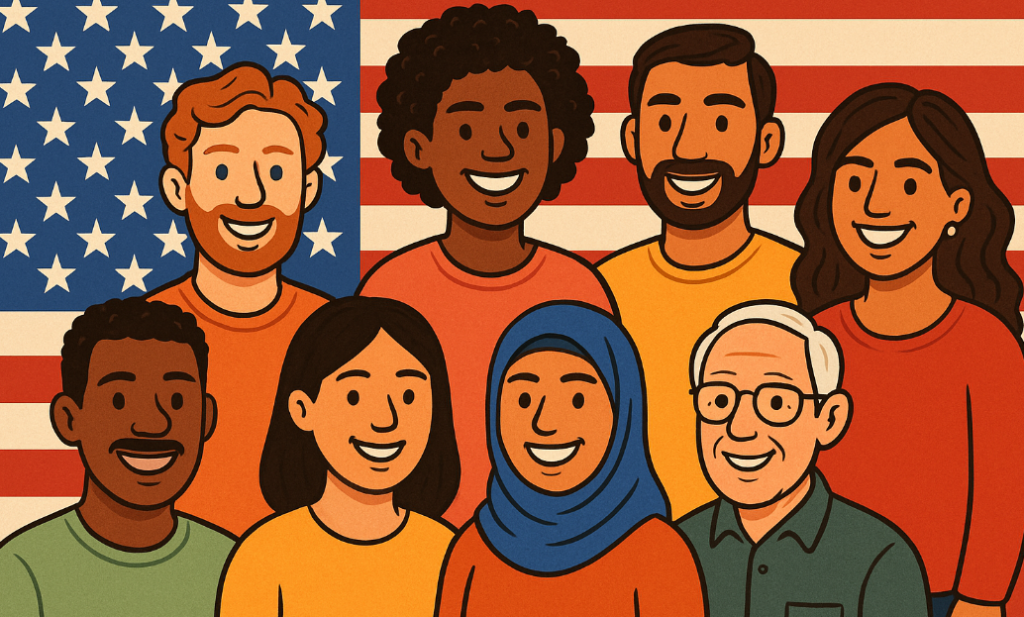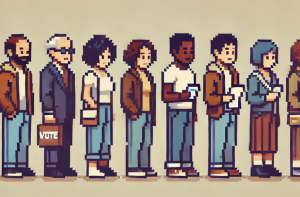
What Happens When the U.S. Actually Invests in Thriving?
In America, your zip code, skin color, and how institutions treat you still say a lot about how long—and how well—you’ll live. But what if we stopped managing crises and instead rewired the system to help everyone thrive?
That’s the radical idea behind a new systems model published in PLOS ONE. The study doesn’t just spotlight the problem—it simulates a solution: what might happen if the U.S. government fully implemented an existing plan for equitable well-being. The result? A plausible 25-year scenario in which:
- Thriving rises by 20 percentage points
- Life expectancy increases by 2.6 years
- Suffering drops nearly by half
- And Black Americans see the greatest gains
And here’s the kicker: it wouldn’t require new funding or laws. Just a shift in priorities.
Behind the Model: A Blueprint for Collective Renewal
The study centers on the Thriving Together Model (TTM), a dynamic simulation that treats community well-being like an ecosystem, fed by four key drivers:
- Vital Conditions – things like clean air, safe housing, meaningful work
- Belonging and Civic Muscle – how connected and empowered people feel
- Fairness in System Design – how just and inclusive our systems are
- Urgent Services Capacity – our ability to respond to crisis
Currently, most funding is allocated to urgent services, including hospitals, food aid, and crisis response. That makes sense in the short term. But over time, this “band-aid budgeting” traps us in survival mode.
The model explores what could happen if we changed that equation: less on emergencies, more on upstream drivers like fairness and belonging. The scenario tested isn’t pie-in-the-sky. It’s based on 68 specific, published federal recommendations that already exist under the rebranded People and Places Thriving plan.
Why It Matters Now
America’s life expectancy has been falling behind other countries for decades. Meanwhile, racial and ethnic disparities in health remain stark. Black Americans, for example, have a life expectancy four years lower than White Americans. But this isn’t just about the numbers—it’s about dignity, opportunity, and justice.
COVID-19 made this brutally clear.
Communities of color bore the brunt of the pandemic’s toll—not because of biology, but because of structural inequities baked into housing, work, education, and healthcare systems.
The federal plan studied here was born out of that crisis. Now, researchers are asking: what if we actually followed through?
A Day in the Life, Reimagined
Picture a child born in 2025 under the ELTRR_Urg35 scenario—the model’s best-case future. She lives in a neighborhood with clean parks, accessible transit, and affordable housing near her school. Her parents are involved in local decision-making, not just struggling to make ends meet paycheck to paycheck.
By the time she’s 25, her chance of thriving in life—measured by how she views her current and future well-being—is 70%. Her risk of suffering, once nearly 4%, is now just 1.4%. And she can expect to live several years longer than someone born a generation earlier.
More Than Hope: Real Mechanisms for Change
So what drives this dramatic change? The study outlines three key mechanisms:
- Multisolving: Investing in programs that solve multiple problems at once (think: building housing near transit improves health, climate, and mobility)
- Rebalancing Investments: Gradually shifting funds from short-term fixes to long-term foundations
- Expanding the Pie: Strengthening belonging and civic muscle helps communities attract more resources and build resilience
These mechanisms compound over time. The result isn’t just improvement, but acceleration toward equity.
What’s Next—and What’s Needed
Let’s be clear: this isn’t a crystal ball. The model doesn’t predict the future—it shows what’s possible if we act. And that action doesn’t need new laws or massive spending increases. What it needs is coordination, courage, and commitment.
What’s holding us back? The study hints at two major challenges:
- Backlash: History shows that progress toward racial equity often sparks resistance
- Top-down fatigue: Real progress requires balancing lived and learned expertise—engaging communities, not just experts
This research gives changemakers a new tool—not just to imagine a better future, but to build one.
Join the Conversation
How would these priorities shift funding in your city or agency?
Do the projected gains surprise you—or feel achievable?
What stands in the way of making multiracial well-being a national goal?
Don’t Let Science Pass You By
Public health breakthroughs and threats are happening fast. Missing one update could mean missing the chance to act, advocate, or lead. Stay sharp, stay informed—with our weekly science brief, trusted by changemakers.
✅ Subscribe now—it’s free and essential.
✅ Share this blog to grow the circle of informed action.


